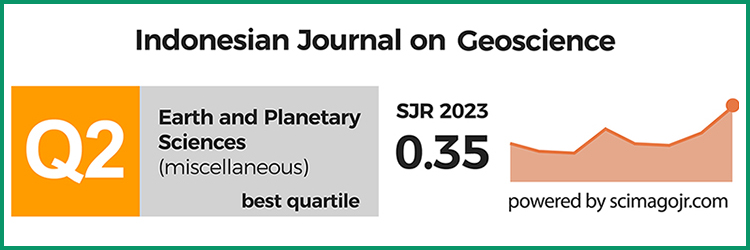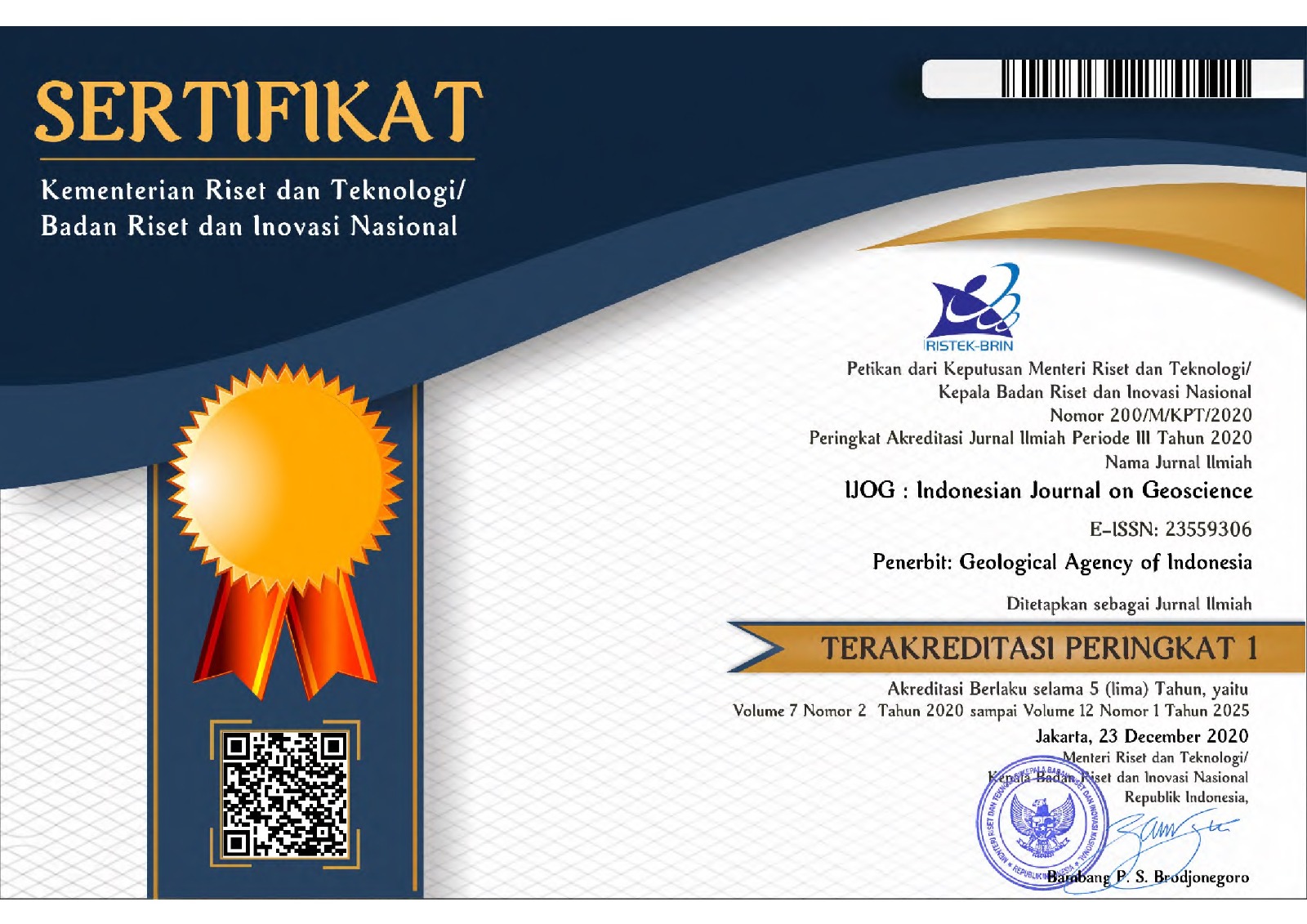Penafsiran Struktur Geologi Bawah Permukaan di Kawasan Semburan Lumpur Sidoarjo, Berdasarkan Penampang Ground Penetrating Radar (GPR)
DOI:
https://doi.org/10.17014/ijog.5.3.187-195Keywords:
Ground Probing Radar, shallow geologcal structure, SidoarjoAbstract
The Ground Penetrating Radar (GPR) survey has been carried out around the Sidoarjo mud eruption. The aim of the survey is to see how far the development of shallow subsurface geological condition related to the eruptions that frequently occur around the main eruption. Ground Probing Radar is one of the geophysical method which is developed as a tool for a relatively shallow and detailed subsurface geological survey. The use of GPR method is not different with the seismic reflection method. The penetration depth of GPR method depends on electric properties of subsurface geological condition such as electric conductivity and dielectric constant. Both of these properties are related to physical properties of soil or rock such as water content and salinity. The result of the survey shows that at a shallow depth the geological structure such as fold, fault, and joint is frequently seen. Based on these results, the GPR method is very useful to decide the indication of potential area of small mud intrusion, so that the result can be used to help the mitigation plan.
References
Allen, R.L., 1979. Studies in fluviatile sedimentation: an elementary geometric model for the connectedness of avulsion-related channel sand bodies. Sedimentary Geology, 24, h.253-267. DOI:10.1016/0037-0738(79)90072-1
Budiono,K., 1999. Ground Probing Radar as a tool for heterogeneity estimation in Quartenary sediment. Proceedings of Indonesian Association of Geologists.
BPLS, 2007. Peta Lokasi dan Lintasan Pendugaan GPR.
Heteren,V.S ., Fitzgerald,D .M ., M cK inlay,P.A ., dan Buynevich, I.V., 1998. Radar facies of paraglacial barrier system. Coastal New England, USA. Sedimentology. DOI:10.1046/j.1365-3091.1998.00150.x
Santosa, S. dan Suwarti, T., 1992. Peta Geologi Lembar Malang, Jawa, skala 1 : 100.000. Pusat Penelitian dan Pengembangan Geologi, Bandung.



















